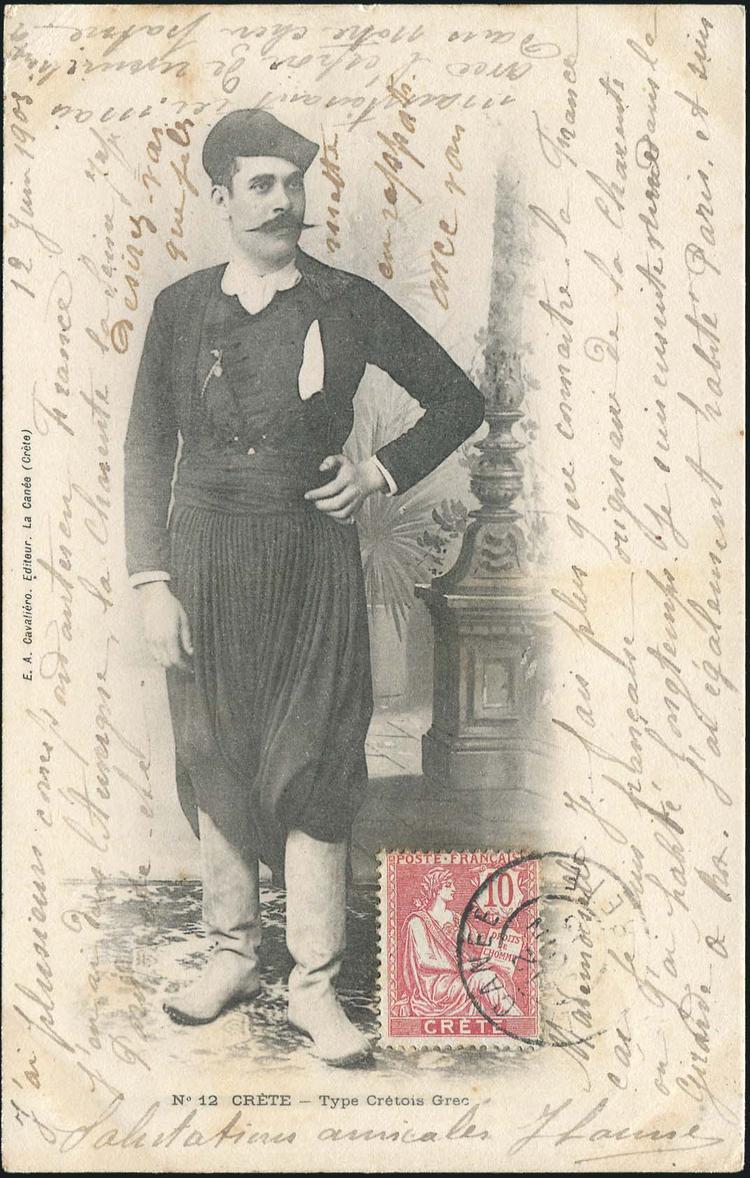Friday 14th December, 2018
Historical costume

Friday 7th December, 2018
Sarouel / harem pants, Traditional Greek costume, Vraka

In my post about vraka, I showed
pairs from various parts of Greece. Some are highly pleated, the most so
being this very smart pair from Crete:
 [ Image: via
Wikimedia,
uploaded by user Pycckhcoz, attributed to E. A. Cavaliero ]
[ Image: via
Wikimedia,
uploaded by user Pycckhcoz, attributed to E. A. Cavaliero ]
This interests me because most of my sarouels — baggy trousers or harem pants — are in light fabrics, so not ideal for British winters. I caught a glimpse of the Daily Star this morning, screaming about Icebox Britain; and though this may not be entirely reliable (the paper also claims that a "Secret space programme base" has been spotted in a crater on the moon), the Beast From The East could yet revisit.
This brings me back to a remark I made in "Citizen of Nowhere on a Brexit Farewell Tour". The Wikipedia article on the fustanella or Greek kilt cites the paper "Akritan Ikonography on Byzantine Pottery" by J. A. Notopoulos, which says that the fustanella evolved from the Roman toga, and that in cold climates, pleats were added for extra warmth. I was puzzled about how this works, but it makes perfect sense when you look at the diagrams in "'Military' Box Pleats" in the blog Matthew A. C. Newsome KiltmakerWayback.
These are the diagrams, which show how the pleats bend and overlap
as the kilt is made wider:


 [ Images: by Matthew A. C. Newsome, in his
blog post "'Military'
Box Pleats" ]
[ Images: by Matthew A. C. Newsome, in his
blog post "'Military'
Box Pleats" ]
To see photos of the effect in kilts, visit Matthew Newsome's blog post. I've never seen harem pants designed this way: if they have pleats at all, these are for decoration and to allow the fabric to gather. But it seems an excellent idea, and makes me think I should commission a kiltmaker to design my next pair.